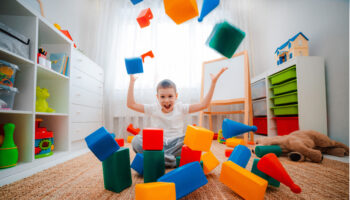Angel Avery-Wright
Plastic bottles are everywhere: water, soda, juice, etc. They are a great resource for the early childhood classroom. They can be used in dramatic play, science, and art for a variety of activities.
Bottles that are washed and sealed can be added as groceries to the dramatic play area, but they can also be used as vases on the kitchen or restaurant table, depending on the dramatic play theme.
Sensory bottles in science are very popular. Mixing different liquids and objects such as oil, water, soap, glitter and food coloring can give children an opportunity to see what happens when they are mixed. Another activity is filling the bottles with different items to listen to the sounds they make when you shake them. Items can include rice, bells, rocks, beads, feathers, pompoms, and wooden cubes, but think outside the box too. Items such as crayons, dice, puzzle pieces, small plastic animals and combs will make different sounds.
Search and find using a bottle is a fun activity. Fill a bottle with sand, rice or some other small items and then add things such as a crayons, plastic animals, paper clips, dominoes, etc. and see if the children can find all the items by shaking the bottle. Remember to keep a list of what’s in the bottle so children can find all the items.
Need some 3-D art for the room? The photos below, from Petite Scholars, show bottles used two different ways to create art. The first photo shows bottles cut into spirals and painted, then hung in the classroom. Imagine the possibilities. Make a bunch of green ones for vines in a jungle, or a bunch of light-colored ones as sun catchers, or white and blue ones for a winter wonderland.
Petite Scholars also made some beautiful plastic flowers from the bottom of the bottles. Add a little paint and a pompom center and straw stem and you have a beautiful bouquet.
Finally, please make sure that all items used are age appropriate and safe for the children in your care.






